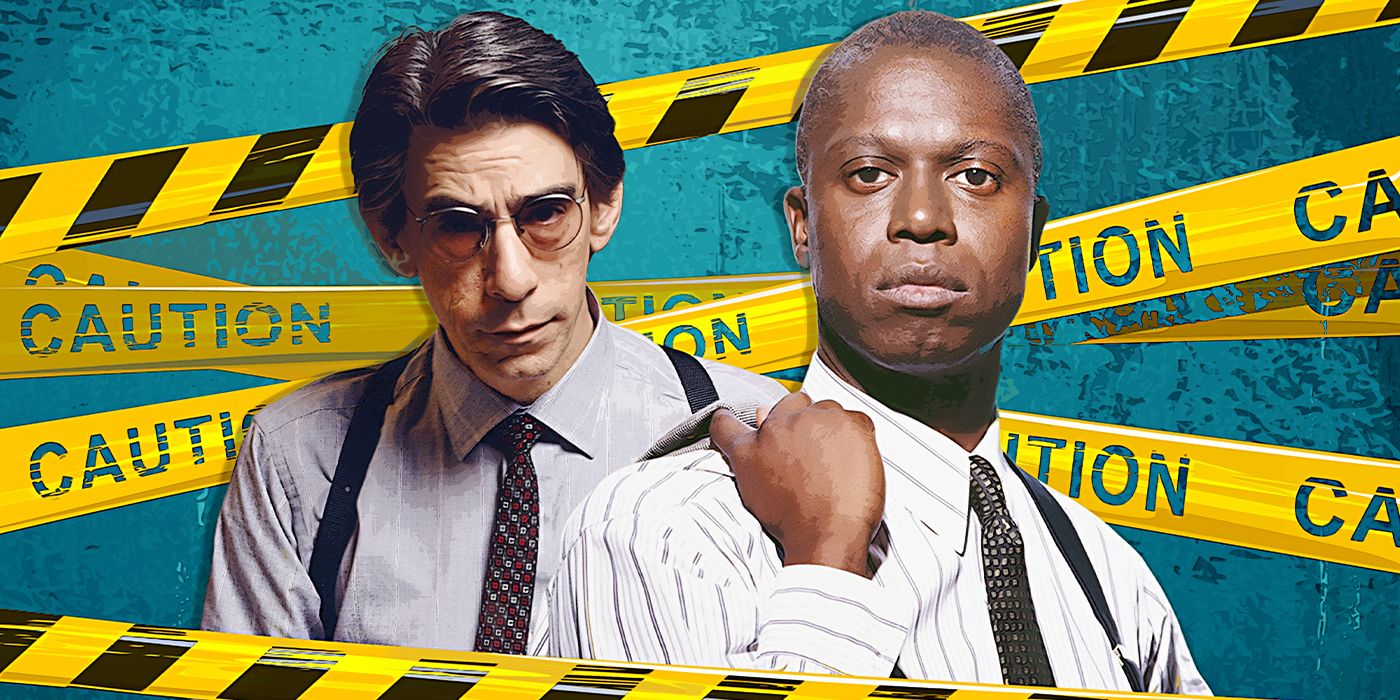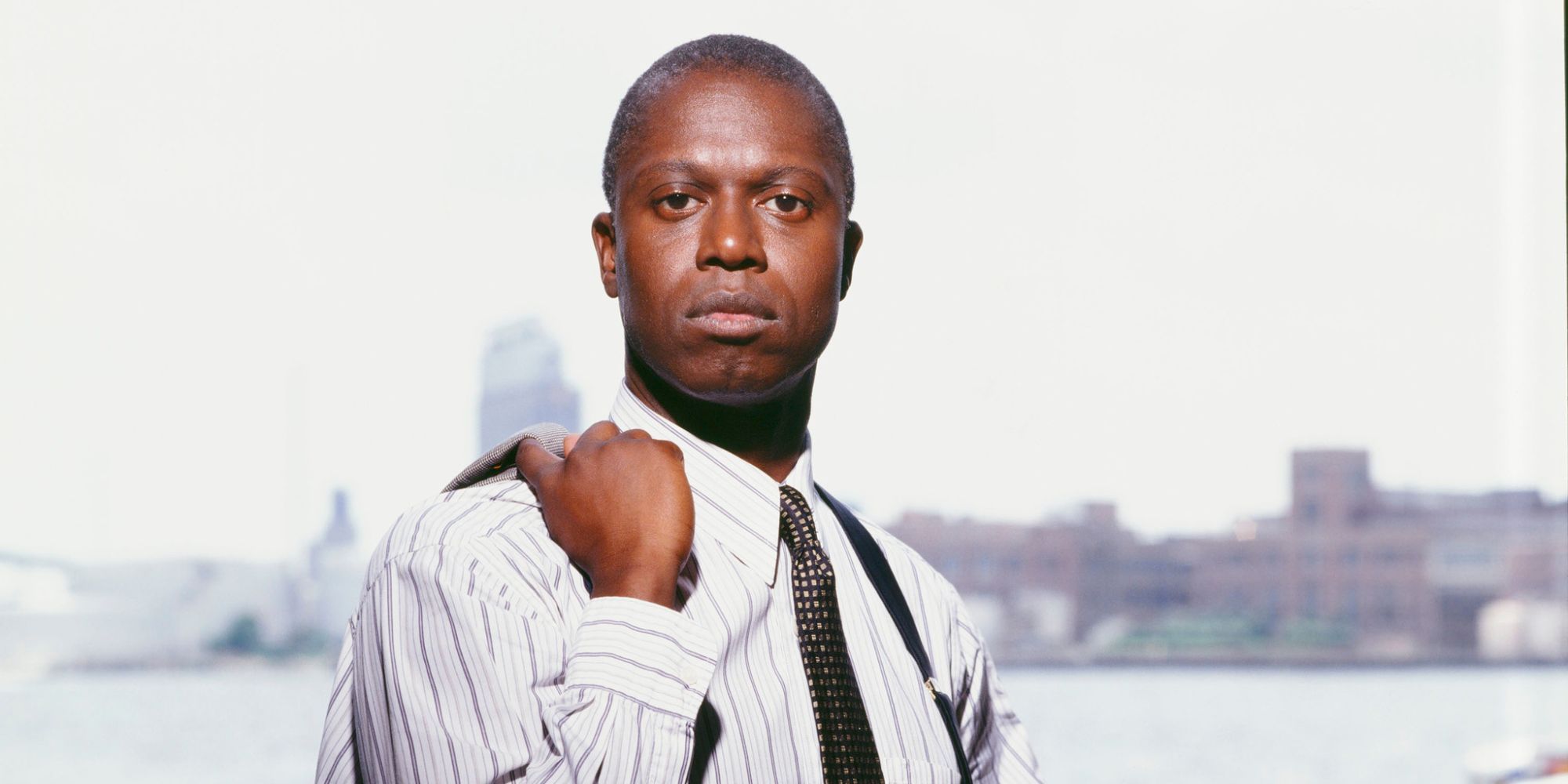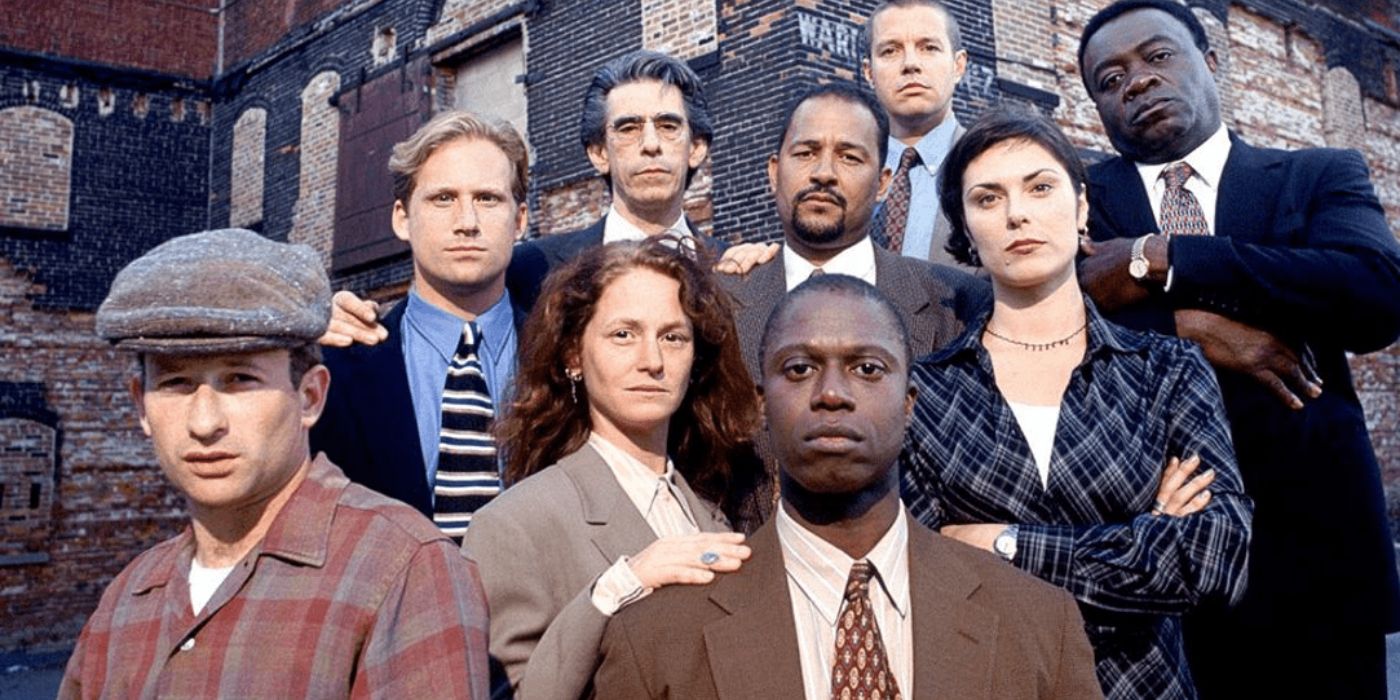The Big Picture
- Homicide: Life on the Street was a groundbreaking TV show that realistically depicted the harsh realities of police work.
- Andre Braugher’s performance as Detective Frank Pembleton was exceptional and earned him a Primetime Emmy Award.
- The show’s impact on other shows, like The Wire, and its successful crossovers with other series solidified its legacy in the police procedural genre.
NBC’s Homicide: Life on the Street premiered on January 31, 1993, the first procedural on network television to truly depict the realities of police work. Set in the crime-riddled streets of Baltimore, the show drew its premise from the award-winning nonfiction work Homicide: A Year on the Killing Streets. The book, written by Baltimore Sun reporter David Simon, detailed the year Simon spent with the Baltimore Police Department Homicide Unit in gritty, honest detail, explaining the harsh realities and the more mundane aspects of the job. Simon’s book wasn’t a representation of the heroic and exalted cops typically portrayed in books and film; it was a realistic account of the men and women who investigate horrendous crimes and live and breathe death daily.
However, Homicide was a show that may have been too real for American audiences. Ratings were lackluster at best, but reviews were strong from the beginning. Perhaps being a Friday night show added to the challenges, given that many viewers had other priorities on Friday nights, but perhaps audiences weren’t ready to give up their glorified view of cops just yet. When NYPD Blue premiered on ABC in the fall of 1993, it brought renewed interest in Homicide, and ratings reflected the change in audience curiosity. Though NYPD Blue sought to differentiate itself with more intense language and nudity, its gritty depiction of cop life matched that of Homicide. It helped usher in a new procedural intent on engaging viewers in the often unpleasant and thankless work of police officers and detectives.
Homicide: Life on the Street
An American police procedural television series chronicling the work of a fictional version of the Baltimore Police Department’s Homicide Unit.
- Release Date
- January 31, 1993
- Creator
- Paul Attanasio
- Cast
- Richard Belzer , Giancarlo Esposito , Peter Gerety , Clark Johnson , Yaphet Kotto , Michael Michele , Kyle Secor , Jon Seda
- Main Genre
- Crime
- Genres
- Crime , Drama , Mystery
- Rating
- TV-14
- Seasons
- 7
Andre Braugher’s Elevated Performance Made ‘Homicide’ a Must-Watch
Few television actors possess the calm charisma that the late Andre Braugher embodied. The steadiness in his voice, his deliberate and impeccable timing, and his magnetic intensity were hallmarks of his many performances. As Detective Frank Pembleton in Homicide, Braugher radiated confidence and brought a level of sophistication to the role that stood out among the more crass cops on the force. Where characters like Steve Crosetti (Jon Polito) and Beau Felton (Daniel Baldwin) were a little rough around the edges, Pembleton was polished and competent. During his last season on the show, Braugher’s impeccable performance won him a Primetime Emmy Award in 1998.
One of the most incredible things about Braugher’s performance as Frank Pembleton is that his character was based on a real BPD homicide detective, Harry Edgerton, featured in David Simon’s book. Braugher took his role seriously, representing the eccentric real-life inspiration for his character with intentional depth and honesty. Pembleton was flawed and troubled by many philosophical conundrums, and Braugher explored every aspect of his character’s humanity. In fact, writers were always trying to challenge Braugher with more intense, thought-provoking scenes, but Braugher never flinched. Braugher’s affecting performance was even more robust after his character had a stroke, leaving the once articulate man at a loss for words. With so many praise-worthy performances, it’s no easy feat to stand out from the talented ensemble cast of Homicide, but that is exactly what Braugher did. His award-winning performance elevated the show and helped cement its legacy as one of the most outstanding procedurals ever.
‘Homicide: Life on the Street’ Impacted Many Other Shows
Homicide: Life on the Street was unique among crime dramas. Murder investigation was, of course, a prominent feature of the show, but its brilliance lay in the intelligent dialogue and character-driven narratives. The show wasn’t some flashy, action-packed, guns-blazing, hero-worshiping procedural. It was a steadfast look at real crime-solving and how murder police deal with the intensities of the job. The dialogue felt genuine, almost as if you were a fly on the wall of the Baltimore precinct listening to the actual, even mundane, exchange between officers. The detectives discussed paperwork and close rates and showed the realities of working in a job that was all about death. Murder wasn’t some occasional happening but an everyday grind. Where many procedurals depict the intense reactions of detectives, almost as if they are investigating a murder for the first time, Homicide showed the realities of studying murder day in and day out — it was commonplace, and that was something that hadn’t been shown before.
Homicide opened the door to another intensely real cop drama that premiered on HBO in 2002: The Wire. This time, David Simon created the series, drawing on his experiences in Baltimore and taking inspiration from his book, Homicide: A Year on the Killing Streets. Simon also sought to include the experiences of his writing partner, Ed Burns, a former homicide detective and inner-city school teacher. The Wire incorporated many elements seen earlier in Homicide: Life on the Street, including filming on location in Baltimore, the darker depiction of police life, and the dynamic cast of flawed characters who were the heart of the series. The Wire went on to be one of the most beloved dramas to ever grace the small screen, and it owes a lot to the earlier success of Homicide.
Homicide also managed to initiate crossovers with many other shows. Character crossovers have long been used as a way to establish continuity and create a bridge between different franchises. This is frequently seen in comics and now movies based on comic books, such as films in the Marvel Cinematic Universe. Television crossovers have often been used to establish spinoffs, such as with the CSI or Law & Order franchises. Homicide: Life on the Street, however, included a variety of crossovers with shows like Law & Order and Chicago Hope and even had characters from the long-ended St. Elsewhere make appearances on the show. Homicide even successfully moved the character of Detective John Munch (Richard Belzer) to Law & Order: SVU. In fact, Munch has appeared on ten different television shows, becoming the only fictional character played by a single actor to do so.
The Legacy of ‘Homicide: Life on the Street’ Lives On
Homicide: Life on the Street introduced audiences to the realities of homicide investigation in a way that had never been done before. Based on the real-life experiences of David Simon, Homicide brought the paper-pushing daily grind of actual police work to life. Real detectives and real cases inspired the show, and its draw was not in the over-the-top heroism so often depicted in police procedurals but in the genuine portrayal of the unseen detectives who make murder their life.
With stand-out performances by the unforgettable Andre Braugher and a talent-stacked cast, Homicide remains a favorite among fans and critics. Though David Simon’s show The Wire would undoubtedly have been a mega-hit, Homicide blazed a trail of realism that primed audiences for a different type of cop drama and perhaps helped make The Wire all the more successful. With captivating crossovers and a record-setting spinoff character in John Munch, Homicide set itself apart in many unforgettable ways. Homicide‘s enduring legacy lives on, even today, in the boundary-pushing realism that forever changed the police procedural genre.






